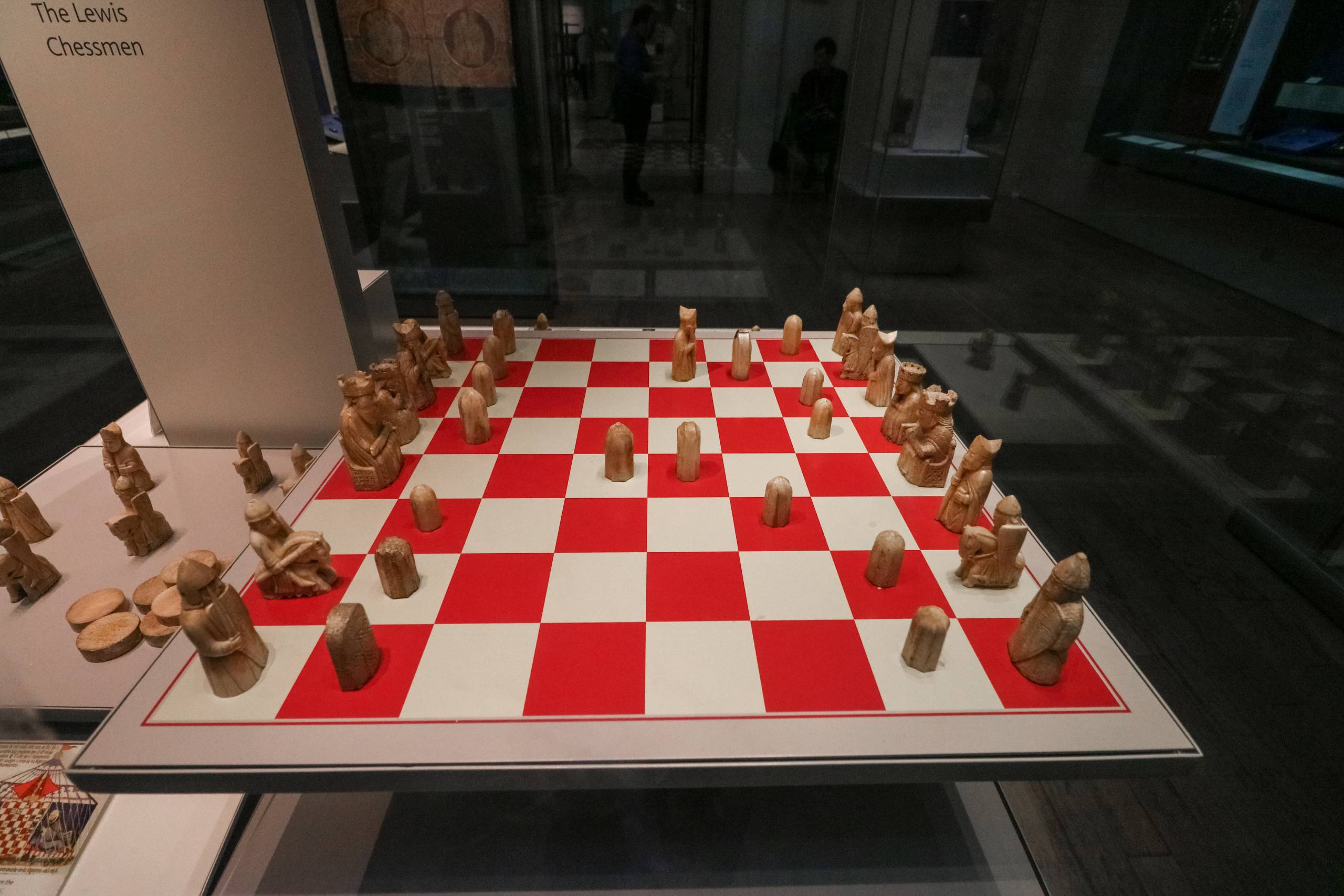The Lewis Chessmen are a group of chess pieces that were discovered on the Isle of Lewis in the Outer Hebrides of Scotland in 1831. They are made of walrus ivory and are believed to have been created in the 12th century.
The Lewis Chessmen are an important cultural artifact, and are considered to be among the finest examples of medieval chess pieces in existence. They are now housed in the British Museum in London, where they are on display in the museum’s Medieval Europe gallery.
The Lewis Chessmen are known for their intricate carvings and attention to detail, which depict a variety of medieval figures, including kings, queens, knights, and bishops. They are believed to have been made in Norway, and are thought to have been brought to Scotland by Vikings.
Overall, the Lewis Chessmen are a unique and fascinating cultural artifact that provide a glimpse into the world of medieval chess and the culture of the time. They are an important part of the collection of the British Museum, and are a must-see for anyone interested in medieval history or chess.

Leave a Reply